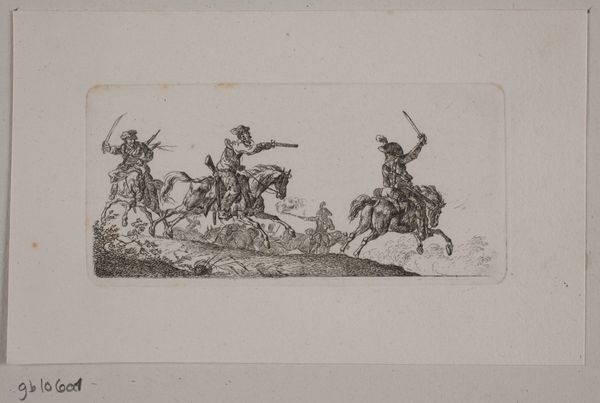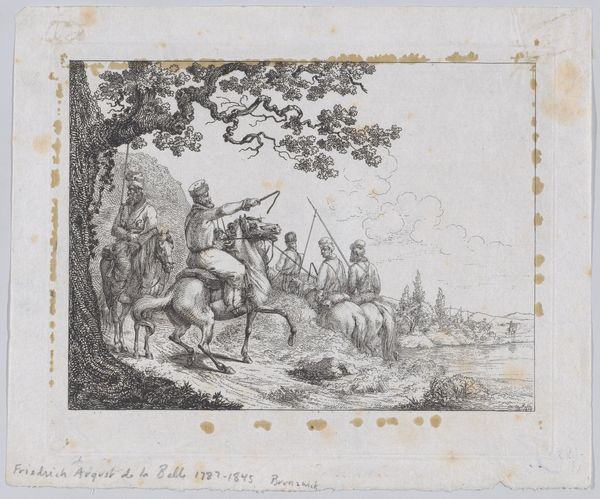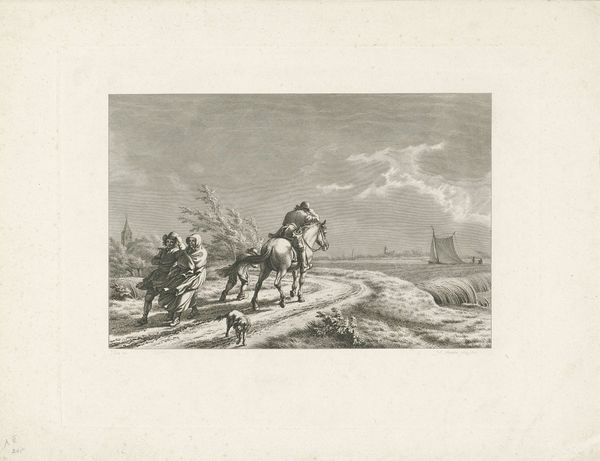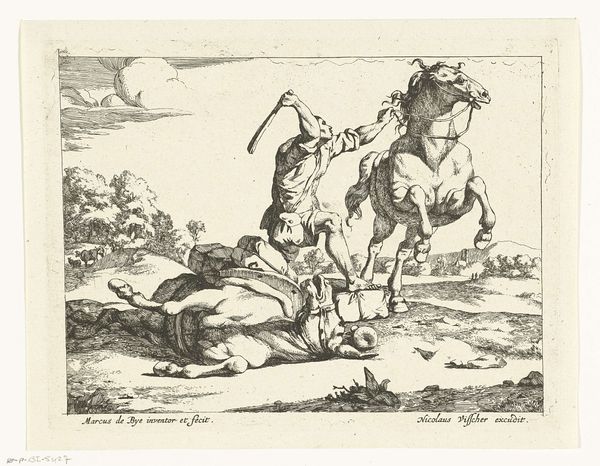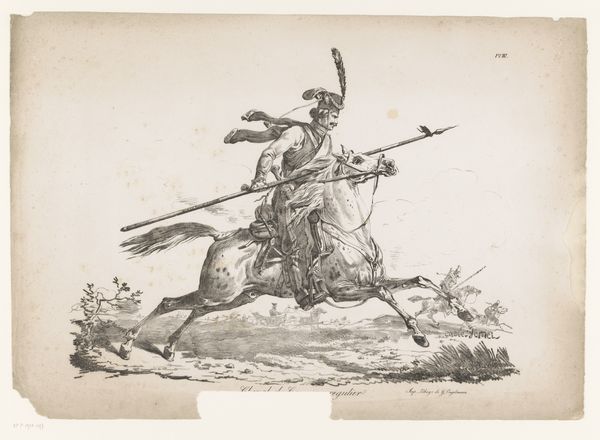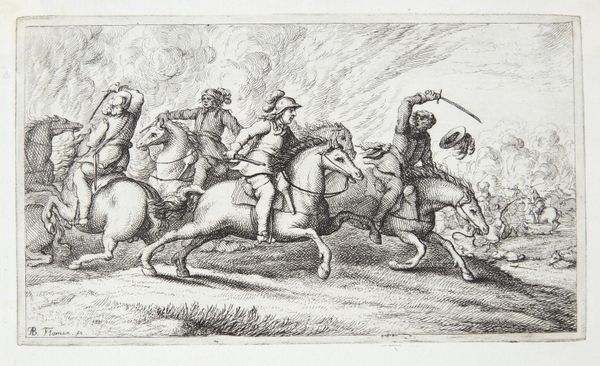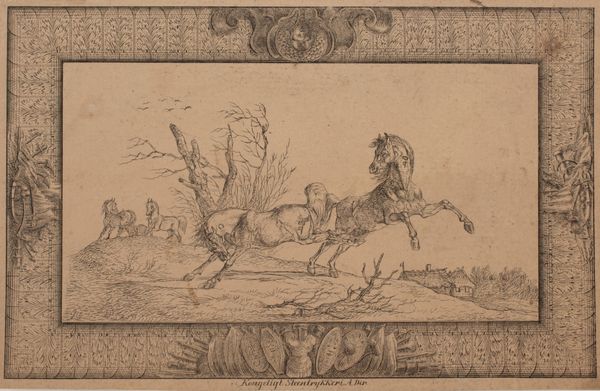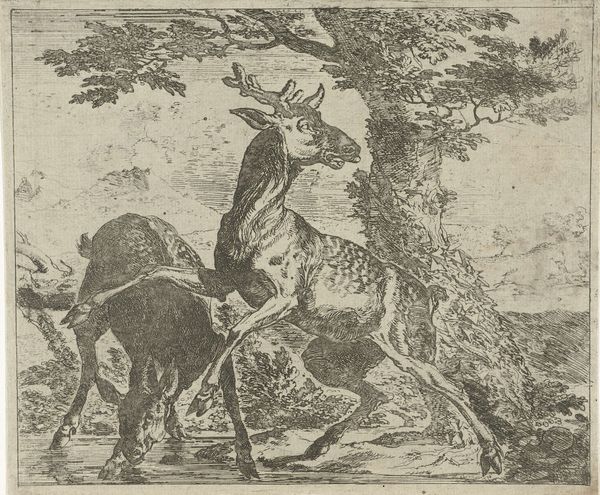
drawing, lithograph, print, etching, paper, ink
#
drawing
#
ink drawing
#
lithograph
# print
#
etching
#
landscape
#
figuration
#
paper
#
ink
#
romanticism
#
genre-painting
#
history-painting
Dimensions: 271 × 391 mm (image); 381 × 524 mm (sheet)
Copyright: Public Domain
Curator: This etching by Carle Vernet, titled "A Cossack," dates to around 1820. The artwork, rendered in ink on paper, presents a dynamic, if somewhat romanticized, vision. What are your initial thoughts? Editor: Immediately, I'm struck by the quality of the line work. There’s such an intense laboriousness to capture movement; every contour describes form and force simultaneously. You feel the horse is about to leap off the page. Curator: Absolutely. Vernet’s portrayal taps into the period's fascination with the Cossacks, particularly their role in the Napoleonic Wars. They became a symbol of resistance, yet were equally constructed by European imagination, their image deployed as emblems of either savagery or nobility. Editor: Interesting, that romantic view definitely influenced his use of lithography. Etching, like many other mediums, demands particular tools, specialized knowledge. How does that context shape the availability and circulation of this piece, considering it likely reaches a market captivated by that image? Curator: It speaks to a broader circulation of images tied to specific geopolitical contexts. Consider, too, the performance of masculinity within this portrayal. The Cossack's dress, the weaponry, his upright posture-- it's all carefully constructed visual rhetoric emphasizing strength, valor and independence during an era where ideas of empire and identity were aggressively contested. Editor: It also brings forth issues of orientalism, I see what you mean about these ideas aggressively shaping production. Vernet is definitely showing, but also arguably shaping this ideal of what it is. But the choice of using a lithograph makes a difference. This method allows more detailed depiction for easier consumption but also for control during reproduction. What is your understanding of how Vernet was processing materials? Curator: Right, it underscores how vernacular imagery circulated to shape popular discourse regarding power. These weren't innocent depictions. They were strategically deployed visuals influencing policies on international stages. I feel this reading of "A Cossack" urges us to delve deeply into power's portrayal through artistic expression. Editor: It certainly pushes me to examine how these images became commodities—bits of material contributing to much larger ideologies and policies, and how the labor to do so, really matters.
Comments
No comments
Be the first to comment and join the conversation on the ultimate creative platform.



